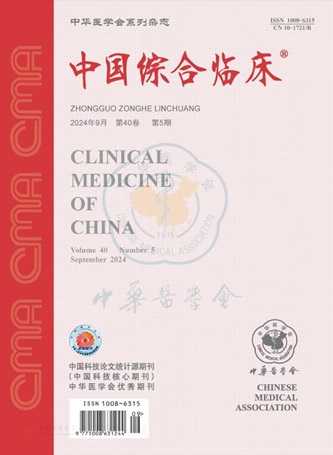Comparison of clinical characteristics of diffused capillary endothelial proliferative Henoch-Schonlein purpura nephritis children with or without crescents formation
引用次数: 0
Abstract
Objective To compare the clinical features of diffuse capillary endothelial proliferative Henoch-Schonlein purpura nephritis (DEP-HSPN) with or without crescent formation. Methods The clinical data of 110 children with DEP-HSPN admitted to Dalian Central Hospital and the First Affiliated Hospital of Dalian Medical University from January 2008 to January 2018 were analyzed retrospectively.Among them, 24 cases were divided into non crescentic group and 86 cases into crescentic group.The clinical characteristics and prognosis of the two groups were statistically analyzed. Results The clinical manifestations of children without crescent body formation group were all type III.There were 35 cases of type III and 51 cases of type V in the crescent body formation group.Compared with non-crescent formation group, the proportion of gross hematuria(83.7%(72/86) vs.29.2%(7/24), χ2=10.396), urine red blood cell count ((112.4±20.3)/HP vs.(45.2±10.6)/HP, t=9.697), 24 h urine protein ((2471.6±242.0) mg/d vs.(1358.5±109.3) mg/d, t=6.372) and serum creatinine ((44.9±9.6) μmol/L vs.(32.3±5.2) μmol/L, t=5.390) increased significantly, the serum albumin ((22.8±3.8) g/L vs.(35.1±5.7) g/L, t=4.806)decreased significantly (all P 0.05). Conclusion When DEP-HSPN is accompanied by crescent formation, gross hematuria, urinary erythrocyte count and the proportion of massive proteinuria increase significantly.Combined immunosuppressive therapy in acute stage and long-term sequential treatment in remission stage can achieve good prognosis. Key words: Glomerulo nephritis; Henoch-Schonlein purpura; Endocapillary proliferation; Children患儿弥漫性毛细血管内皮增殖性紫癜肾炎伴或不伴月牙形成的临床特点比较
目的比较伴有或不伴有新月形形成的弥漫性毛细血管内皮增生性紫癜性肾炎(DEP-HSPN)的临床特点。方法回顾性分析2008年1月至2018年1月大连市中心医院和大连医科大学附属第一医院收治的110例DEP-HSPN患儿的临床资料。其中24例分为非新月形组,86例分为新月形组。对两组患者的临床特点及预后进行统计学分析。结果无新月体形成组患儿临床表现均为Ⅲ型,其中Ⅲ型35例,Ⅴ型51例。与非新月形组相比,肉眼血尿(83.7%(72/86)vs.29.2%(7/24),χ2=10.396)、尿红细胞计数(112.4±20.3)/HP vs.(45.2±10.6)/HP,t=9.697)、24小时尿蛋白(2471.6±242.0)mg/d vs.(1358.5±109.3)mg/d,t=6.372)和血清肌酐(44.9±9.6)μmol/L vs.(32.3±5.2)μmol/L,t=5.390)的比例显著增加,血清白蛋白(22.8±3.8)g/L与(35.1±5.7)g/L,t=4.806)明显下降(均P<0.05)。急性期联合免疫抑制治疗和缓解期长期序贯治疗可取得良好的预后。关键词:肾小球肾炎;过敏性紫癜;毛细血管内增殖;儿童
本文章由计算机程序翻译,如有差异,请以英文原文为准。
求助全文
约1分钟内获得全文
求助全文
来源期刊
CiteScore
0.10
自引率
0.00%
发文量
16855
期刊介绍:
Clinical Medicine of China is an academic journal organized by the Chinese Medical Association (CMA), which mainly publishes original research papers, reviews and commentaries in the field.
Clinical Medicine of China is a source journal of Peking University (2000 and 2004 editions), a core journal of Chinese science and technology, an academic journal of RCCSE China Core (Extended Edition), and has been published in Chemical Abstracts of the United States (CA), Abstracts Journal of Russia (AJ), Chinese Core Journals (Selection) Database, Chinese Science and Technology Materials Directory, Wanfang Database, China Academic Journal Database, JST Japan Science and Technology Agency Database (Japanese) (2018) and other databases.

 求助内容:
求助内容: 应助结果提醒方式:
应助结果提醒方式:


